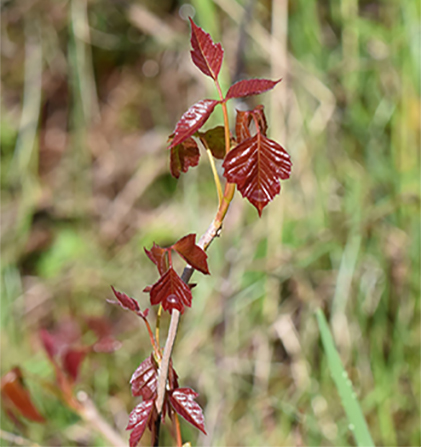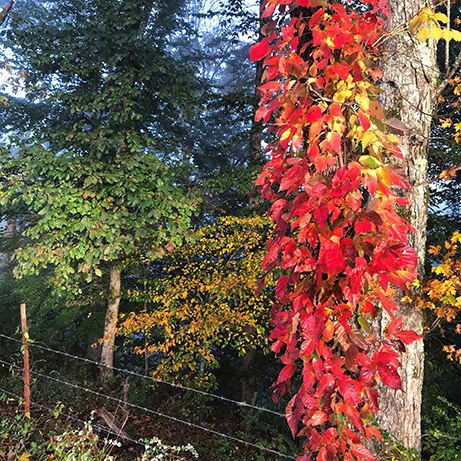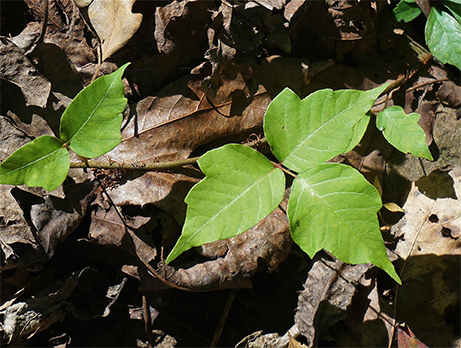Leaves of three, let it be. That is the very basic rule, if you don’t know how to identify poison ivy (Toxicodendron radicans). Toxic means poisonous, dendron means tree and radicans means to take root. Not everyone is allergic to the oily resin urushiol (u-ROO-she-ol) located in the leaves, root and stem. But, don’t take the chance. The result is an itchy rash.

If you do come in contact with this plant or vine, wash with soap and water right away. Caution: Do not touch or rub your eyes or nose. When in the woods, make sure to carry some poison ivy cleanser towelettes in your backpack. If not remedied very shortly after contact, the rash may show up within the next two days and last for several weeks.
FYI: Dogs can pick up the oils on their fur. It doesn’t bother them but, by touching their coat, you can get it on your skin. If your clothing or shoes have the oil on them they too may transfer to your skin. Wash everything that may have been in contact. Items can still be contaminated if put away without cleaning. Don’t use wood for a fire that has poison ivy vine on it. The smoke will do harm to your lungs.

Now let’s learn how to avoid it by knowing what to look for. The stem of the first leaf separated by the next two opposing leaves is shorter then the next stem of two side leaflets. Leaf edges can be smooth or coarsely toothed. The leaf surface can be glossy or dull. It looks a bit different when climbing a tree as growing on the ground. As the seasons change, so does the color and shine. It has quite a few disguises so it is best to do more research and in the meantime “Leaves of three, let it be”.

Stay on the hiking path. And yes, you may find it in your own backyard. Birds spread the seeds around. The woods, even your backyards are fun places to explore and enjoy. As long as you are aware of what may be harmful, go and have a safe adventure. If you are looking for us, you will find us outside.


